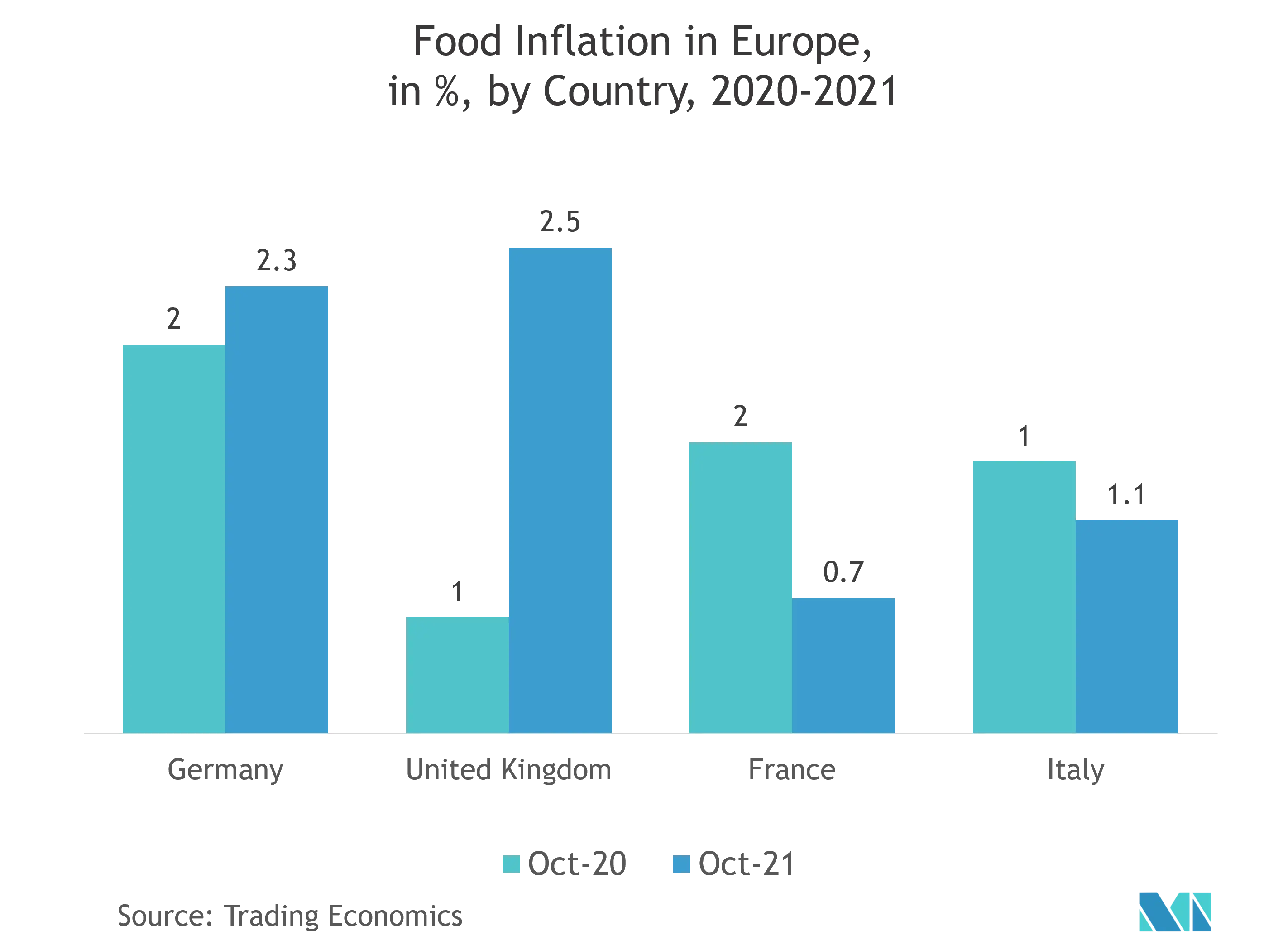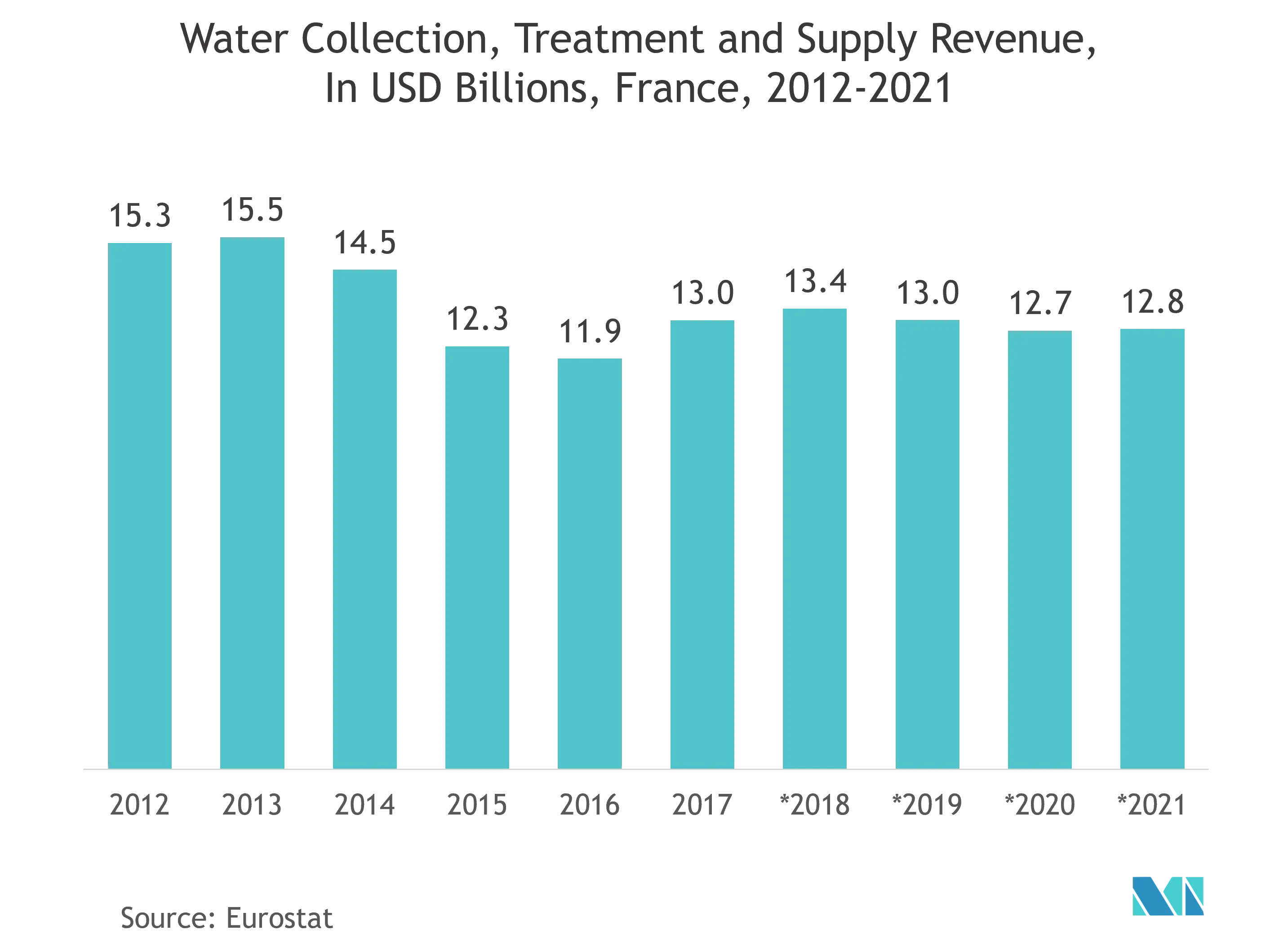Market Trends of Europe Water Automation and Instrumentation Industry
This section covers the major market trends shaping the Europe Water Automation & Instrumentation Market according to our research experts:
Demand from Food and Beverage Industry to Witness a Significant Growth Rate
- The production of food and beverages requires a large amount of water. Water quality is crucial to product quality and operational reliability as water is one of the important raw materials in the food and beverage processing industry. The implementation of water and wastewater automation in the food and beverage industry can save significant revenues for the company along with eliminating errors and waste, enhancing efficiency and productivity, and expanding profit margins.
- Further, various companies in the Food and beverage industry are deploying various automation and instrumentation methods. For instance, a food processing plant in Peru was faced with natural groundwater contaminated with high turbidity and arsenic, making it unsuitable for use in food processing. AMI’s custom-engineered solution incorporates ultrafiltration membranes with pretreatment by coagulant and depth filtration, as well as chlorination of the filtrate to produce water meeting the customer’s high-quality standards for use in food product processing. The system is AMI PLC automated using a central control enclosure and touchscreen HMI operator interface.
- Moreover, instrumentation technology such as liquid analyzer, pressure measurement system, flow measurement system is being deployed in the food and beverage industry to reduce the volume of wastewater during the process by using the above-mentioned instrumentation technology when discharging products from the lines. Further, Raw water, process water, or wastewater can be efficiently monitored with modular, space-saving analysis panels. This simplifies daily process integration and operation in the food and beverage industries.
- Also, automation technologies such as DCS, SCADA, among others, are used in various food and beverage industries to control various instrumentality types, including variable speed drives, quality control systems, motor control centers (MCC), kilns, manufacturing equipment, and manage the water and wastewater treatment.

France to lead the Water Automation and Instrumentation in the region
- In France, the amount of water withdrawn for drinking water is marginally smaller than the EU average but far smaller than average levels in other developed countries like the USA or Japan. Moreover, according to a report published in fp2e.org, the total amount of water withdrawn for drinking water purposes in Metropolitan France was 5.4 billion m3, representing an annual amount of just over 85 m3 of water per person, 234 liters per person per day. There is an urgent need to bring this water usage in check to monitor, efficiently distribute, and control the water shortage in the region.
- The government is encouraging new projects of wastewater treatment plants in the region, and increased competition and eroding margins in utilities, transport, government, infrastructure, resources, and manufacturing make automation technologies very critical. In March 2021, The SUEZ and Schneider Electric groups announced the creation of a leader in digital water to develop and market a joint offering of innovative digital solutions for the management of the water cycle. This joint venture will support municipal water operators and industrial players in accelerating their digital transformations by providing them with a unique range of software solutions for planning, operation, maintenance, and optimization of water treatment infrastructure.
- The pandemic did cause havoc across the world due to which the French drinking water suppliers have increased the dose of chlorine in the water distribution networks. It was mainly done since many companies have ceased their activities. The water in the pipes remained stagnant for a longer period, so adding more chlorine prevented possible microbes or viruses from appearing.
- Such an instance would drive the demand for automated sensors and monitoring systems in the studied market, and more and more companies are aiming to reduce their energy consumption and increase their operational efficiency.

